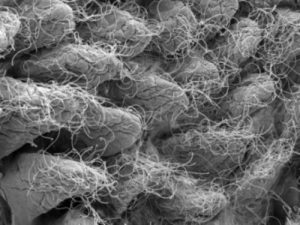Excerpts from an article by Jane Brody in the NY Times:
Beating Back the Risk of Diabetes
This year, nearly two million American adults and more than 5,000 children and adolescents will learn they have a potentially devastating, life-shortening, yet largely preventable disease: Type 2 diabetes. They will join 29.1 million Americans who already have diabetes.
Diabetes and its complications are responsible for nearly 200,000 deaths a year; the fatality rate among affected adults is 50 percent higher than among similar people without diabetes. Alarmingly, recent studies even have linked diabetes to an increased risk of dementia and Alzheimer's disease. Even people with above-average blood glucose levels, but not diabetes, have an elevated risk.
The Diabetes Prevention Program study, conducted among about 3,800 people who had pre-diabetes, found that moderate weight loss — an average of 12 pounds — reduced the odds of progression to diabetes by nearly 50 percent.
An excellent discussion of what is known about the effect on diabetes of various foods and supplements appeared recently in Nutrition Action Healthletter at cspinet.org/iceberg.pdf. Some highlights:
Carbohydrates - breads, grains, cereals, sugary drinks and sweets of all kinds — are most problematic for people with diabetes or at risk of developing it. Carbohydrates are eventually metabolized to glucose, which raises the body’s demand for insulin. Consume less of them in general, and choose whole-grain versions whenever possible.
If you must have sweet drinks, select artificially sweetened ones. In two huge studies of nurses and other health professionals who were followed for 22 years, those who drank one or more sugary soft drinks a day had about a 30 percent higher risk of developing diabetes than those who rarely drank them, even after their weight was taken into account.
But there’s good news about coffee. Two or three cups of coffee (but not tea) a day, with or without caffeine, have been consistently linked to a lower risk of Type 2 diabetes.
For protein, limit consumption of red meat, especially processed meats like sausages, hot dogs and luncheon meats, which are linked to a higher diabetes risk. Instead, choose fish, lean poultry (skinless and not fried), beans and nuts. Low-fat dairy products, including yogurt, and even fatty ones may lower the risk of diabetes; the reason is unclear.
Most protective are green, leafy vegetables — spinach, chard, kale, collards, mustard greens and even lettuce — as well as cruciferous vegetables like cabbage, broccoli and cauliflower. But all vegetables are good and should fill at least two-thirds of your dinner plate.
The nutrients magnesium and vitamin D are also potentially protective. In fact, the preventive value of leafy greens, whole grains, beans and nuts may lie in their high magnesium content. In a well-designed clinical trial of 32 overweight people with insulin resistance, the prelude to diabetes, blood glucose levels and insulin sensitivity improved in those who took a daily magnesium supplement for six months. Don’t go overboard: More than 350 milligrams of magnesium daily can cause diarrhea.
Vitamin D, long known to be crucial to healthy bones, may also be helpful. In one study of 92 overweight or obese adults with prediabetes, those who took a supplement of 2,000 international units of vitamin D daily had better function of the pancreatic cells that produce insulin..
Of course, how much you weigh and what you eat are not the only concerns. Regular, preferably daily, physical exercise is a vital component of any prevention and treatment program for Type 2 diabetes, or most any chronic ailment. Weight loss can reduce diabetes risk by about 50 percent, but adding exercise to that can lower the odds by 70 percent, compared with people who remain overweight and inactive, according to a study that followed nearly 85,000 female nurses for 16 years. Women who were active for seven or more hours weekly had half the risk of developing diabetes as did women who exercised only a half-hour a week.

 More long-standing medical advice goes out the window. New advice: avoid diet soda and artificial sweeteners. The amazing part is that our gut bacteria are involved.
More long-standing medical advice goes out the window. New advice: avoid diet soda and artificial sweeteners. The amazing part is that our gut bacteria are involved. This image depicts gut microbiota.
This image depicts gut microbiota.  Another study finding health benefits from eating dairy foods (vs not eating any dairy foods).
Another study finding health benefits from eating dairy foods (vs not eating any dairy foods). These results go against the medical advice we've been hearing for years (why am I not surprised?). The new advice: High-fat dairy yes, low-fat dairy no. I also think
These results go against the medical advice we've been hearing for years (why am I not surprised?). The new advice: High-fat dairy yes, low-fat dairy no. I also think  A banana a day keeps the doctor away? A recent
A banana a day keeps the doctor away? A recent